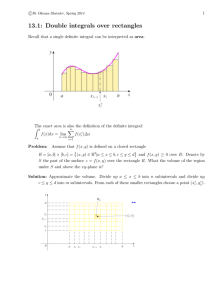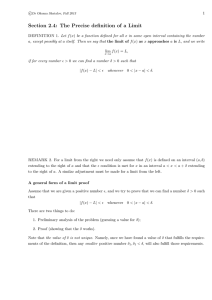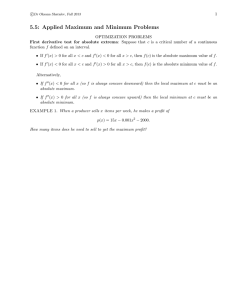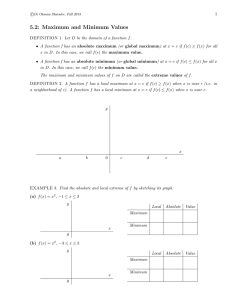Document 10581850
advertisement
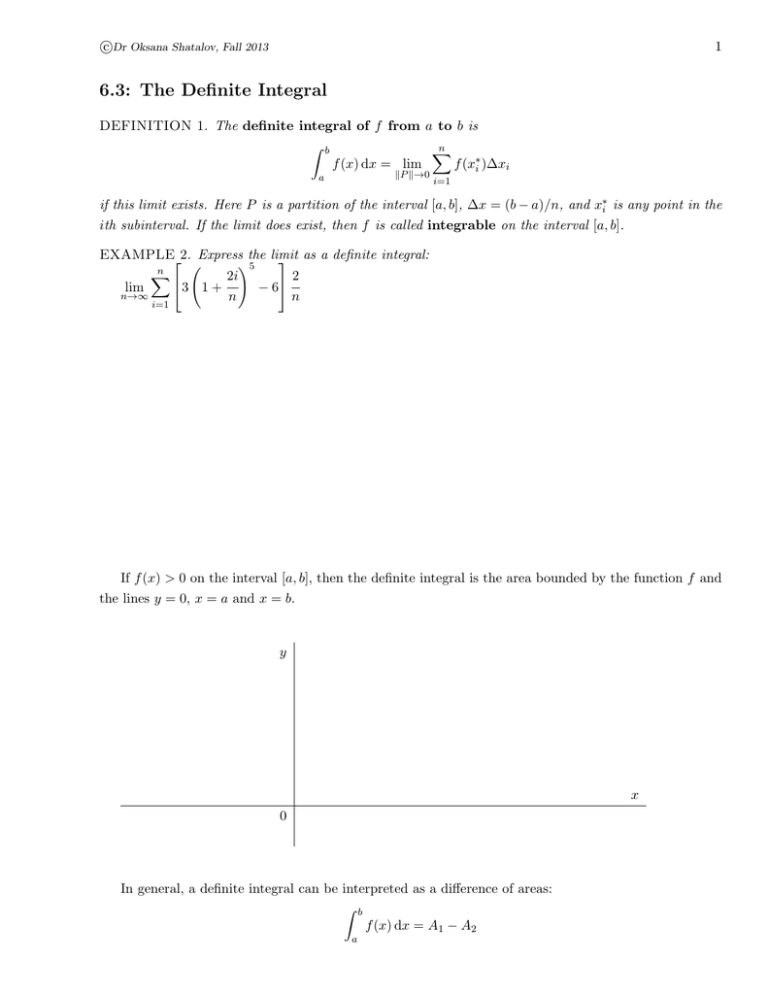
c Dr Oksana Shatalov, Fall 2013 1 6.3: The Definite Integral DEFINITION 1. The definite integral of f from a to b is Z b n X f (x) dx = lim f (x∗i )∆xi kP k→0 a i=1 if this limit exists. Here P is a partition of the interval [a, b], ∆x = (b − a)/n, and x∗i is any point in the ith subinterval. If the limit does exist, then f is called integrable on the interval [a, b]. EXAMPLE2. Express the limit as a definite integral: !5 n X 2 2i 3 1 + lim − 6 n→∞ n n i=1 If f (x) > 0 on the interval [a, b], then the definite integral is the area bounded by the function f and the lines y = 0, x = a and x = b. y x 0 In general, a definite integral can be interpreted as a difference of areas: Z b f (x) dx = A1 − A2 a c Dr Oksana Shatalov, Fall 2013 2 where A1 is the area of the region above the x and below the graph of f and A2 is the area of the region below the x and above the graph of f . y x 0 EXAMPLE 3. Evaluate the following integrals by interpreting each in terms of areas: Z 0 p (a) (1 + 25 − x2 ) dx −5 c Dr Oksana Shatalov, Fall 2013 Z 3 3 (2 − x) dx (b) −1 Properties of Definite Integrals: Z b • dx = b − a a Z b • Z f (x) ± g(x) dx = a Z b f (x) dx, where c is any constant a a b • c Z Z f (x) dx = a f (x) dx, where a ≤ c ≤ b b c Z f (x) dx = − a • b f (x) dx + a • Z g(x) dx a b Z cf (x) dx = c Z b Z f (x) dx ± a • Z b a f (x) dx b a f (x) dx = 0 a Z b • If f (x) ≥ 0 for a ≤ x ≤ b, then f (x) dx ≥ 0 a Z • If f (x) ≥ g(x) for a ≤ x ≤ b, then b Z b f (x) dx ≥ a g(x) dx a Z • If m ≤ f (x) ≤ M for a ≤ x ≤ b, then m(b − a) ≤ b f (x) dx ≤ M (b − a). a c Dr Oksana Shatalov, Fall 2013 4 EXAMPLE 4. Write Z 5integral: Z Z 3 as a single Z 5 f (x) dx + f (x) dx − f (x) dx + 3 0 5 f (x) dx 5 6 Z EXAMPLE 5. Estimate the value of 0 π (4 sin5 x + 3) dx

